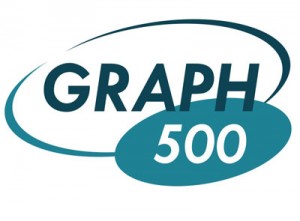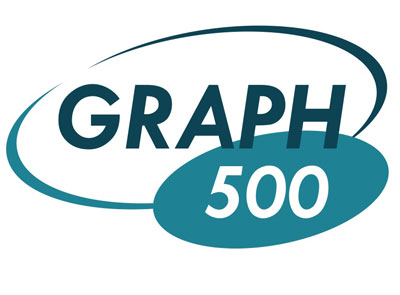 The Graph500 executive committee is soliciting submissions to the 8th Graph500 and Green Graph500 lists, which will be unveiled in June at ISC’14 in Leipzig.
The Graph500 executive committee is soliciting submissions to the 8th Graph500 and Green Graph500 lists, which will be unveiled in June at ISC’14 in Leipzig.
The importance of Big Data processing is steadily growing. Numerous large-scale problems that represent social, physical, or financial interactions are most naturally modeled with graph representations. Such graphs requiring the processing and storage of billions of vertices and graph edges, high-performance graph computations to process them efficiently.
The Graph500 list encourages the development of such large-scale high-performance graph processing systems and offers a forum to showcase and discuss the performance of various solutions.
Many of the practically relevant algorithms, such as betweenness centrality to identify central vertices, rely on breadth-first search(BFS) traversal. Making BFS a very important motif in graph computations. The Graph500 benchmark measures this motif on a graph structure that mimics real-world graphs. Determining the number of traversed edges per second (TEPS) at a certain graph scale.Today’s top system processes 15.3 TTEPS at a scale of 2^40 vertices.
 The Green Graph500 list tracks the energy consumed by large scale graph computations. It groups the systems into two categories: small data and big data to differentiate between computations at different levels of the memory hierarchy. The separator between the two categories is the median problem size of the Graph500 list in the same year. This enables a fair evaluation and comparison across multiple years. Top systems in the Green Graph500 list can compute at 6.7 MTEPS/W in the big data category and 153.2 MTEPS/W in the small data category; each traversed edge costs mere 149.2 nJ and 6.5 nJ, respectively.
The Green Graph500 list tracks the energy consumed by large scale graph computations. It groups the systems into two categories: small data and big data to differentiate between computations at different levels of the memory hierarchy. The separator between the two categories is the median problem size of the Graph500 list in the same year. This enables a fair evaluation and comparison across multiple years. Top systems in the Green Graph500 list can compute at 6.7 MTEPS/W in the big data category and 153.2 MTEPS/W in the small data category; each traversed edge costs mere 149.2 nJ and 6.5 nJ, respectively.
Both lists provides a basis of tracking and detecting the progress and future trends in large-scale graph processing in terms of performance and energy consumption. The lists are unveiled at the yearly ISC and SC conferences. ISC’14 is the next event is in Leizpig on June 23rd.
Can your system beat this? Submit to both lists in a single step before June 7th.




